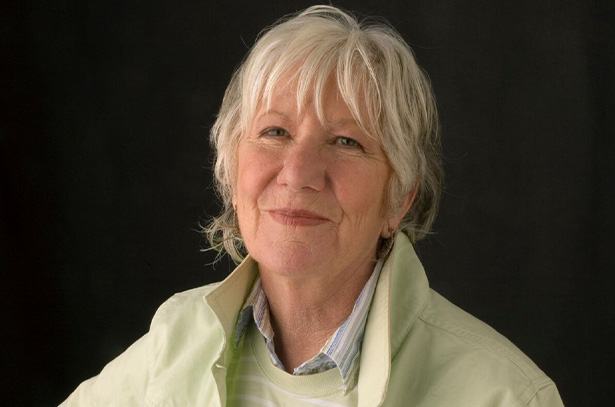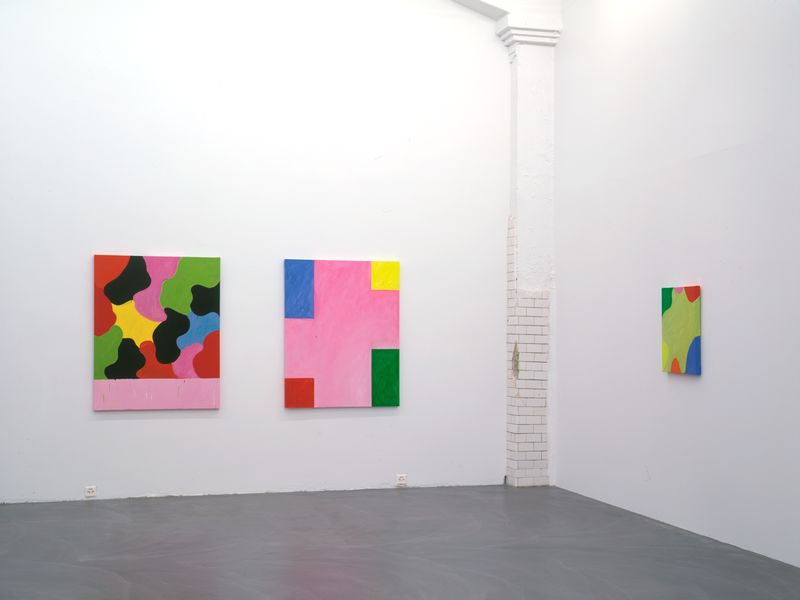American artist Mary Heilmann (born 1940 in San Francisco, lives and works in New York) shows an exhibition of new oil paintings and works on paper at the Galerie Hauser & Wirth. Her abstract works, which she started in the 70's, are some of the most extraordinary examples of contemporary art. They have also attracted a wide audience in Europe since the artist participated in major exhibitions such as Der zerbrochene Spiegel (The Broken Mirror) at the Kunsthalle Wien (Vienna) and in the Deichtorhallen in Hamburg in 1993/94; or in nuevas abstracciones (New Abstractions) at the Centro de Arte Reina Sofia in Madrid in 1996. Additionally, Heilmann had several large-scale solo exhibitions, including a show at the Zürcher Stiftung für konstruktive und konkrete Kunst in 1997 and at the Camden Arts Centre in London this year. “The question, how an abstract painting at the end of the 20th century should look like, could be answered as following in the future: like one by Mary Heilmann.” This is how the young artist Lisa Ruyter recently described the importance of Mary Heilmann’s œuvre; her work has lost none of its original freshness over the past three decades. Raised in San Francisco and Los Angeles and influenced by the surfing culture, the free speech and Beat movements, Mary Heilmann completed first a degree in literature, before she studied ceramics at Berkeley. Only after moving to New York in 1968 she began to paint. While most artists at that time were experimenting with the concept of dematerialisation and demanding that painting should avoid any references to experience outside the material presence of the work itself, opted Mary Heilmann for painting, rebelling against the accepted rules. “Rather than following the decrees of modern, non-representational formalism, I started to understand that the essential decisions taken during the creative process were more and more related to content. The Modern movement was over...” Since then, Heilmann has created compositions that evoke a variety of associations. Her work may be non-representational and based on an elementary, geometrical vocabulary – circles, squares, grids and stripes – but there is always something slightly eccentric, casual about them. The simplicity of the forms is played down by a deceptive form of nonchalance: the contours are not clearly defined. In some paintings, amorphous forms appear to melt into each other like liquid wax. Splashes of colour can be discerned, sharp edges bleed for no apparent reason, and the ductus of the brushstrokes is always perceptible. Heilmann’s casual painting technique conceals a frequently complex structure that only gradually reveals itself to the viewer. Above all, the artist brings out the symbolism of colour, emphasising the qualities of colour’s subtle nuances, its potential for arousing emotion and evoking associations with consummate skill. Heilmann communicates her personal experiences through her compositions. Not, however, in the sense of a literal illustration, but as the eloquent abstraction of a moment in the past – or in the future. Heilmann’s paintings describe a personal world, but it is a world with which the viewer is familiar. This allows a dialogue to take place that extends far beyond the merely formal observation of a work of art: everyday events are hinted at, fragments of pop or high culture can be discerned, music, literature and film are cited. In other words, life in all its richness is expressed in these apparently so simple, abstract compositions, in which, to quote Mary Heilmann, “stories are told in songs – elliptically, poetically, in the form of allusions, hidden references or riddles to be solved.” A rational analysis of the effect Heilmann’s paintings have is not always possible, which renders their appeal all the more emotional. Looking at them has often the effect of taking a sip of instant happiness; they recall memories of a day at the beach, or can be enjoyed like a beautiful piece of music. It is precisely the variety of emotions expressed in – and elicited by – Heilmann’s paintings that make her work such a shining example of contemporary art.














